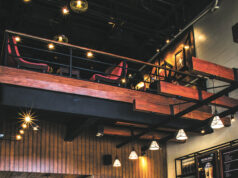Vehicles are getting increasingly sophisticated, thanks to the manifold technologies automakers are equipping their offerings with. It is precisely because of these technologies that the driving experience today is arguably more enjoyable and definitely safer. Here are some of them.
Adaptive cruise control (ACC) is one of the car innovations that the Web site Digital Trends has paid homage to, in an article titled “20 car technologies we’re thankful for (and a little spoiled by).” This particular piece of technology involves the use of a radar or a camera system to adjust the speed of a vehicle relative to the one in front of it. It isn’t totally new; there’s regular cruise control that keeps the vehicle running at a steady pace, and it only stops when the driver intervenes. ACC “will speed up or slow based on the position of the cars in front, reducing fatigue,” the site says. “Some will even bring you a complete stop when necessary, allowing the driver to set off again with a quick touch of the Resume’ button,” it adds.
Kelley Blue Book (KBB), an automotive research company, has named automatic emergency braking (AEB) one of the 10 best car technologies of 2018. And it’s clear why. “Automatic Emergency Braking or AEB uses a variety of sensors to determine if a forward collision crash is imminent and automatically applies the brakes to diminish the severity or avoid a crash entirely,” the company says. But while it has praised the system as “extremely good,” KBB discourages complete dependence on it. “[I]t’s meant as a last resort for when the driver isn’t paying attention, and it’s extremely alarming when the system does engage.” Still, AEB deserves to be a priority on one’s shopping list, the company says.
Another safety technology that KBB considers to be among the best automotive technologies of the year is lane departure warning (LDW). “Distracted driving happens. Whether it’s a quick glance at the stereo to change the channel or a child urgently asking for your attention, sometimes we pay a little less attention to the road than we should,” the company says. Using cameras, an LDW system can detect if a car has wandered too far out of its lane and immediately alert the driver — by giving a visual or audible signal or prompting the seat or the steering wheel to vibrate. “The system turns itself off when you use a directional, so there’s no fear of accidental engagement,” KBB says.
Navigation technology has long been in existence, but the kind built into vehicles today is far more sophisticated than previous iterations. “When the first GPS units starting showing up in the 1990s, they were laughably slow and inaccurate, often taking several seconds to respond to simple commands like zoom in or zoom out,” Digital Trends notes. The site adds that while car manufacturer systems still can’t match smartphone navigation, they’re getting better and “still get you out of asking for directions.” “Modern navigation technology can search for local points of interest, download traffic data, automatically detour in case of an accident, and much, much more,” the site says. And in the near future, there will likely be holographic windshield projection, smarter head-up displays and more cloud connectivity.



